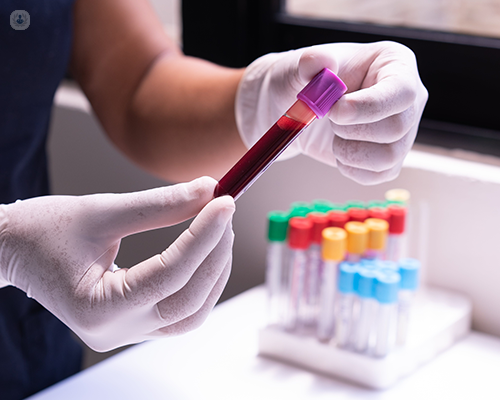Anti-nuclear antibodies
What is analysed?
Anti-nuclear antibodies (ANA) are autoantibodies that target components of the cell nucleus. The presence of ANA may suggest an autoimmune disease.
The ANA test is used as an initial screen to detect the presence of ANA in the blood and assess the need for additional tests.

What does the result mean?
The result indicates the presence or absence of ANA in the blood.
Why conduct the analysis?
The ANA test is conducted to help diagnose autoimmune diseases like systemic lupus erythematosus (SLE), rheumatoid arthritis, or Sjögren's syndrome.
When to conduct the analysis?
The ANA test may be conducted when symptoms such as joint pain, fatigue, or skin rashes are observed.
What sample is required?
A blood sample is used for the analysis of ANA. The blood is drawn from a vein, usually in the arm.
Is any prior preparation necessary?
Patients should fast for 8-12 hours before the blood sample is taken. In addition, patients should also inform a healthcare professional about any medications being taken, as they could affect results.
How is it performed?
The collected blood sample is sent to a laboratory, where it is analysed using indirect immunofluorescence (IIF) or enzyme-linked immunosorbent assay (ELISA) for the presence of ANA in the blood.
What are the normal values?
Titres are used to measure the concentration of ANA. A negative test result indicates that no ANA were detected.
Elevated titres of 1:40-1:640 on Hep2000 cells are seen as a positive ANA test result.
What does having altered values mean?
- Positive result: A positive test result indicates the presence of ANA. However, a positive identification alone isn't a sure sign of an autoimmune disease. Further tests and a clinical evaluation are needed.